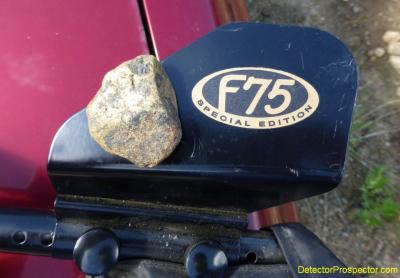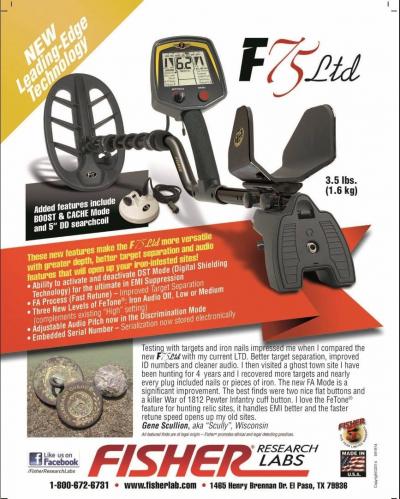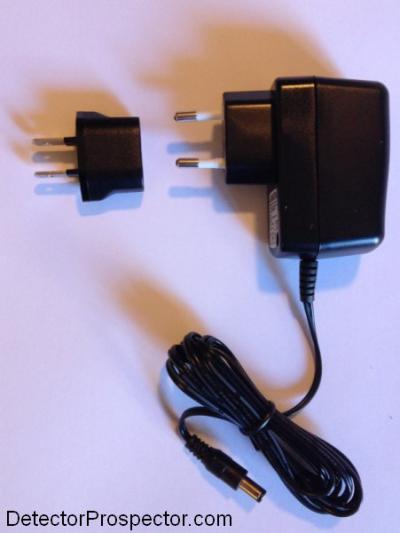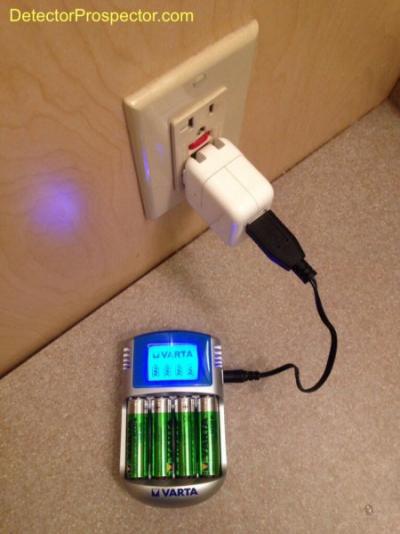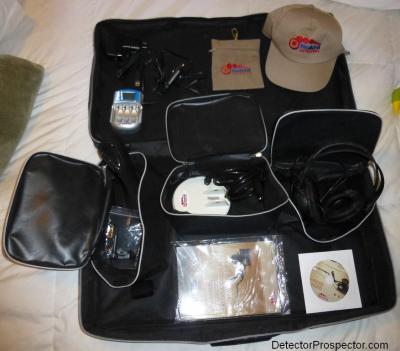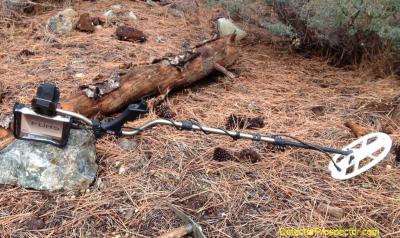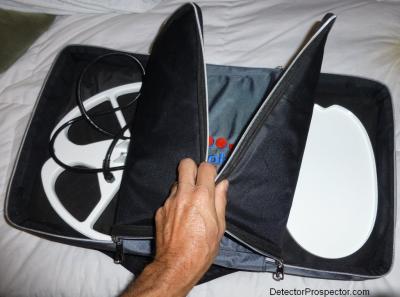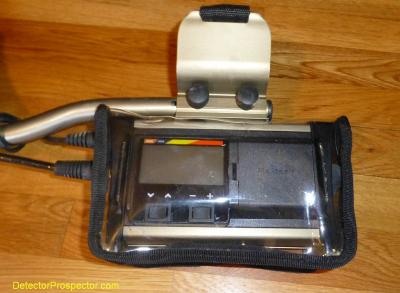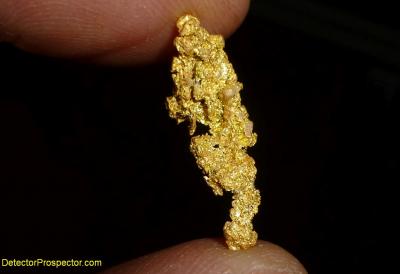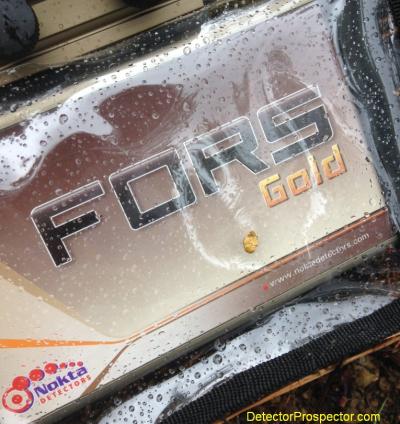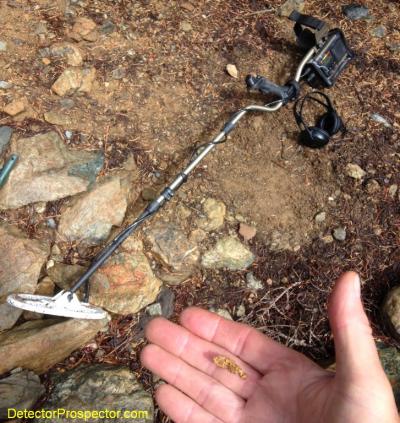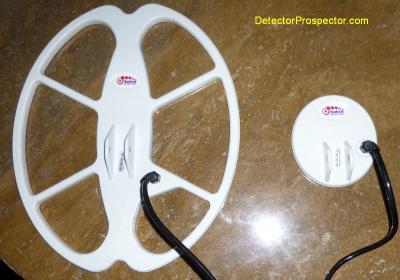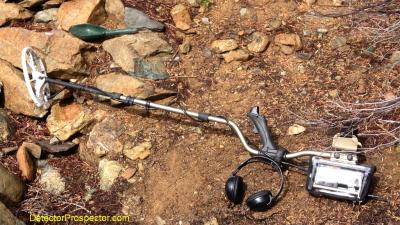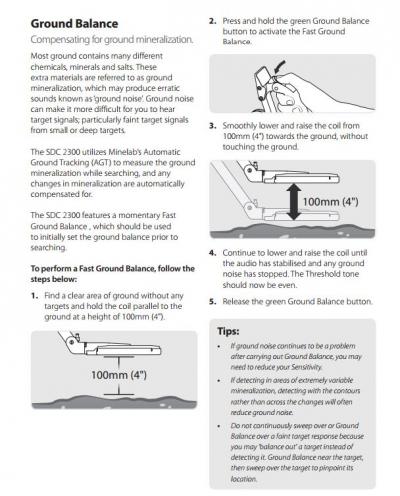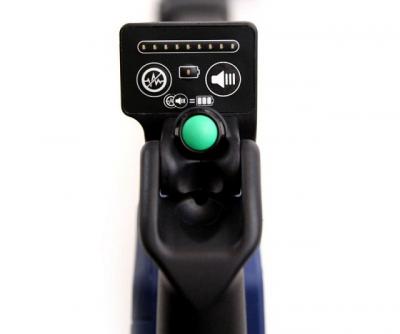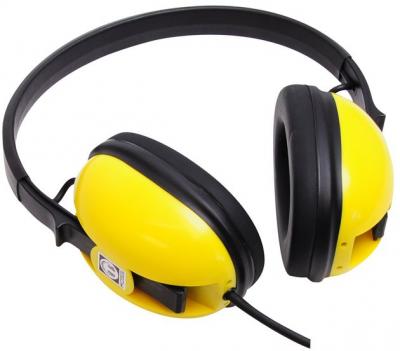-
Posts
20,046 -
Joined
Content Type
Forums
Detector Prospector Home
Detector Database
Downloads
Everything posted by Steve Herschbach
-
In my opinion the mid-frequency units do not hold a candle to the GMT or Gold Bug 2 for small gold. Mind you, the mid-frequency units may come very close, and offer better overall value. But if you want to hit the tiniest spec of gold or wire or sponge gold high frequency is still the name of the game. I will never get rid of my Gold Bug 2 until somebody makes something better, which right now looks to be never. I actually have two in case they ever stop making them. The XP Deus is not even in the same ballpark. But not everybody wants or needs more than one detector. Most people just want one detector that does most of what they need. They fall into two groups. 1. "I want a detector for gold prospecting but also want to use it for other things". These people are best served by mid-frequency do-it-all detectors with a strong prospecting mode. Units like the Garrett AT Gold, Fisher Gold Bug Pro, Minelab X-Terra 705, Tesoro Lobo, or White's MXT. I do not think anything is gained by spending over $1000 for a VLF detector if prospecting is a primary goal but with other uses in mind. 2. "I want a top end detector for coin, relic, and jewelry detecting, and I might use it prospecting now and then". These people usually want a flagship detector, and most any top end detector will work these days. I do not recommend them specifically for prospecting but I certainly can go find gold with the likes of the White's V3i or XP DEUS or even a Minelab CTX 3030. Put the smallest coil on them you can get and they can find gold nuggets. These days now it is easy to spend over $1000 on these flagship VLF detectors, but if anything they are usually weaker and certainly no better at prospecting than the under $1000 crowd. I need at least two detectors, a PI and a VLF, and I need at least one to be waterproof. Getting down to two would be a real challenge for me. Probably would be a GPX 5000 and CTX 3030.
-

Minelab CTX 3030 for Gold Nuggets
Steve Herschbach replied to Steve Herschbach's topic in Minelab Metal Detectors
Yup, I know that guy, and he is absolutely right! The key part being "if you find gold in an area". If faced with a mile of new area littered with nails, just where is the gold at? Rather than start at one end with a PI digging nails for eternity, a VLF may serve as a recon tool to maybe, if a person gets lucky, find an indicator nugget or two. Then, with the location narrowed down, bring in the PI and dig everything. I know you know that. Every place and location calls for a different strategy. Dig it all is a great theory but other realities intrude. The main being how much junk there is and how much time is available to deal with it. There are no doubt many places PI users have been avoiding for the sheer amount of junk. Old campsites in particular. We have all seen them and walked away from them when toting a PI. A good VLF could really pay off in such locations. As Ron's videos proved. http://www.detectorprospector.com/forum/topic/292-minelab-ctx-3030-finds-25-ounce-gold-nugget/ But once a given location proves to have gold, yeah - dig it all! -
Ron (CA) has shown at http://www.detectorprospector.com/forum/topic/292-minelab-ctx-3030-finds-25-ounce-gold-nugget/ what should be obvious - the Minelab CTX 3030 can find large gold nuggets. Lately, I have been getting very interested again in just what detectors would serve me best hunting mineralized nail infested tailing piles looking for gold nuggets. The Minelab PI detectors and Garrett ATX have limited ability to identify ferrous stuff but both fail at depth and when the trash gets really thick. So a VLF is still needed for some situations. The Minelab CTX is not particularly hot on small gold but it is exceptionally quiet on nails and other ferrous stuff that produce high tone false signals on other VLF detectors. This also makes the Minelab multi-frequency units more prone to masking, but that is less an issue in tailing piles than around a cabin site. Which is why I found this video of the CTX and the new Coiltek 10" x 5" DD interesting. It would be a good nugget coil for the CTX, but the $369 price tag is unfortunately quite steep. I may have to make do with my Minelab coils for now, but if the CTX proves out for me this coil may be a future acquisition.
-
I actually have no firm plans yet. You were wanting to know about a month from now, and I do not know what I am doing this weekend! New rule. I am going to get my detector collection down to eight. Then, if I want to buy a new one, I must get rid of one first. This mess is out of control! I could survive on three or four detectors so eight is luxury.
-
Getting where? Funny you should ask Fred I was just compiling a list of what to keep and what may have to go. Keepers and primary use. In other words the reason I keep it. Though there is overlap in actual use. Minelab GPX 5000 - big gold PI Minelab SDC 2300 - small gold PI Garrett ATX - beach and water detecting Fisher Gold Bug 2 - micro gold Minelab CTX 3030 - coins White's V3i - jewelry Nokta FORS Gold - nugget detecting trashy areas Fisher F75 Ltd - nugget detecting trashy areas The last two detectors are very similar and one or the other may eventually win out, but I like them both so both stay for now. That makes my working core collection seven or eight detectors. But remember I do more than just prospect so have varied needs. On the probable chopping block: White's DFX - replaced by V3i Fisher Gold Bug Pro - replaced by F75 White's Surf PI - replaced by ATX White's TDI - replaced by ATX White's GMT - replaced by Gold Bug 2 XP Deus - replaced by F75 I have some older models also that I hate to lose but I am just not using them. These are a White's GM3 and V/SAT, Compass 77B, and some old White's blue box Goldmasters and a Coinmaster. I easily have twice as many detectors as I need right now. The thing is I do not rely on reports from others to decide what works for me. Only I can determine that. So I just get them and use them and eventually something ends up gathering dust, and gets sold. White's is taking a pretty big hit. They have always been a favorite company of mine but they can only repackage the MXT so many times. Might of got me with the MX5 but instead of adding manual ground balance like I wanted they removed the Locked mode and now the unit only runs in ground tracking, just like a Lobo. There really is nothing else like the V3i though so it is a keeper, and I have to have something to run my Bigfoot coil. Frankly, I am getting burned out on testing detectors. My goal during the brief Reno winter is to sell half of my stuff, and in 2015 concentrate on pure detecting hours as much as possible.
-

DIY Jaw Crusher?
Steve Herschbach replied to EZMoney Bob's topic in Gold Panning, Sluicing, Dredging, Drywashing, Etc
Boy, I don't know Bob. Seems like something a guy can buy easier than build. Most of the home built units look to be impact mills. Here is a wild one http://www.treasurenet.com/forums/hard-rock-mining/345927-rock-crusher-36-bucks-homemade-tearing-up.html -
Paradise Valley is the oldest operating metal detector "pay-to-mine" operation in Alaska. The area to detect is small compared to what was available at Ganes Creek and Moore Creek and the nuggets smaller, but some great finds have been made there over the years. I was browsing around and just found a thread with some recent photos from Paradise Valley at Link deleted since Findmall update broke all old links The actual Paradise Valley website is at http://www.akpub.com/akttt/parad.html
-

Garrett ATX Scores 2 Nice Pocket Gold Nuggets
Steve Herschbach replied to Bearkat's topic in Garrett Metal Detectors
Good going Alan, gotta love that ATX gold! I have had mine out again lately and hopefully will find something with it before too long. -
I am a big fan of the Fisher F75 from a different perspective than most. I am a prospector and have done very well finding gold nuggets with the F75. The very powerful all metal mode combined with the simultaneous on screen target id numbers have allowed me to quickly and efficiently hunt trashy tailing piles in search of large gold nuggets. The light weight and superb balance make the F75 a pleasure to use for long hours in rough terrain. It also was my detector of choice for my one and only trip to the UK that I have done so far, and it served me well there. I spent a month in 2013 metal detecting on Jack Wade Creek near Chicken, Alaska. I kept my great results there quiet pending a return trip there in 2014. That trip has now been made but that is another story already told in detail on my website. Now I can finally reveal the details of the 2013 expedition. I started out early one morning with my big gun pulse induction metal detector, but got onto a tailing pile that had ferrous trash scattered down one side, and I was just not in the mood for it that morning. I went back to my truck and got out my trusty F75. I run the F75 in all metal because it has instant target response; there are no worries about recovery times in all metal. The coil picks up every variation not only in targets but in the ground allowing me to monitor what is going on at all times. Knowing what the ground is doing is important in keeping the ground balance properly adjusted for maximum results. The key thing I like about the F75 in all metal however is that the meter always runs in discrimination mode and places a nice, large target number on screen while in all metal. The audio alerts me to a potential target, which I then analyze more carefully while watching the target numbers. All metal goes deeper than discrimination modes, so no on screen number means a very deep target beyond discrimination range. This alone makes running in all metal desired when prospecting because running in discrimination mode would miss all those extra deep signals. In all metal I dig them until a target number shows up. Deep targets or small targets in mineralized ground will often read ferrous, so I watch the numbers and if they even once jump to non-ferrous, I dig. Only targets that give a 100% strong ferrous reading over multiple sweeps can be safely passed. Though I will throw in my caveat that no discrimination system is 100% accurate and there is always a risk of passing a good target. When in doubt, dig it out! I do often employ pulse induction detectors and do very often just dig everything. I advocate that when time and conditions allow. The reality is this is not always practical for many reasons. Maybe it is just limited time and overwhelming amounts of junk. Better to increase the odds by using discrimination than bogging down digging 100 nails in a small area. In my case it often boils down to fatigue or flat out not being in the mood to dig junk. So it was on this particular morning, and therefore my F75 came out and I got to work sorting through the trash working my way up the side of the tailing pile. I crested the top and got a strong reading and looked down. There was a shallow dig hole with leaves in it, obviously from some hunter there in prior years. I figured the guy had recovered a trash item and kicked it back in the hole so I cussed him quietly under my breath. I hate it when people do that! Then the target numbers caught my eye. They were all over the place. A crumpled piece of flat steel might give numbers like that though. Still, I was curious and figured I would retrieve the trash this person left in the field. I gave the old dig hole a big scoop, and out pops a big gold nugget!! I seem to have a talent for finding ugly gold nuggets, and this one was perhaps the ugliest I have ever found. It looked more like a rock burnt in a fire than a gold nugget when I dug it up, though the glint of gold is unmistakable. This gold however was very pale and in fact later analysis revealed it to be roughly half gold and half silver and other metals. It is a little known fact that gold alloys tend to have very poor conductivity ratings. Gold is very conductive, and silver is a superb conductor. You would think adding silver to gold would improve the conductivity, but in fact just the opposite happens, and the conductivity lowers dramatically. Gold/silver alloys are closer to lead in conductivity than that of the pure component metals, explaining why bullets read identically to most gold nuggets. This ugly nugget is a detectorists worst nightmare, because the 50-50 alloy mix and rock content give it a much lower conductivity reading than would be the norm. I surmise what happened is this earlier operator got a poor signal and gave a dig to get the coil closer to the target. The signal did not improve, as would be expected with most gold nuggets, so the operator decided it was trash and moved on. The rest of the hill being covered with junk no doubt contributed to this decision. It was my insistence on investigating everything except 100% ferrous readings that made the difference. The readings on this target were not solid as one would expect from a pretty strong signal but all over the place. Most people would say that indicates a trash target but I have seen many gold nuggets do the same thing in mineralized ground. The result is I dug a shallow 2.33 ounce gold nugget that somebody else walked away from. Sadly for them one more scoop would have revealed the nugget for what it was. Hopefully this is a reminder to the reader that far too often detectorists look for excuses not to dig. How many good finds get left behind because we do not want to take that extra minute or two to dig a target? This nugget is far from a premium find, but I have already sold it for over twice the cost of a new Fisher F75. That detector was a real money maker for me as that was far from the only gold I ever found with it. Unfortunately I say was. I made a huge change in my life in 2013 and moved from Alaska to Reno, Nevada. The move resulted in a desire for me to weed down my detector collection. I was pretty excited to do some coin detecting in Nevada where the potential finds were much better than those possible around Anchorage, Alaska. Almost all my detecting with the F75 had previously taken place in rural locations far from possible electrical magnetic interference. In Reno, EMI raised its ugly head. I found much to my dismay that the F75 did not like my new location, and in fact when turned on to hunt the yard at my new home I could not get it to settle down at all. No matter what I did the machine chirped and beeped and numbers flew all over the screen. Unfortunately I experienced what many urban hunters have found out – the F75 is a very sensitive high gain detector that does not get along well with electrical interference. I ended up selling my F75 in 2013 for this sole reason. Fast forward to the fall of 2014. I am contacted by the good folks at Fisher wanting to know if I am interested in trying out a new version of the F75 they are preparing for market. I of course say sure as I am always game to go metal detecting with different units. A new F75 is sent my way along with a list of the possible improvements. One immediately gets my attention – improved resistance to electrical interference. All the focus was on a new mode or “process”, as Fisher likes to call them. The new FA process is intended to better pull non-ferrous items out of trashy or mineralized ground. It does indeed work as advertised as I found out in an accidental situation I came across. I went to a local park and did a simple hunt for non-ferrous targets, comparing the DE default mode to the new FA fast mode. I did not really care what I found as long as it was non-ferrous. I should note the ground here is very difficult, reading 1 on the Fe meter, the second highest reading you can obtain. Hunting in this park is very much like nugget detecting, and the best detectors get very limited depth and highly inaccurate target numbers as a result of the high mineralization. One spot really summed it all up for me. I found three targets I could cover in a single wide swing that all read as ferrous in DE mode, but when I switched to FA mode all three switched to non-ferrous. FA mode is very fast with short, machine gun type reports in the audio. I was running in two tone mode, with ferrous giving low tones and non-ferrous high tones. In DE mode I could sweep and get three low tones in a row. Simply switch to FA mode and now there were three high tone reports in a row. This was an extremely dramatic result seen in person. In this case all three targets proved to be nothing more than aluminum targets, but they could just as well have been small hammered coins in the UK or small gold nuggets in Alaska. I hate to oversell things and I have to note that the difference in going to FA mode is not going to be earth shaking. Most targets read the same in DE and FA modes. But FA provides a tipping point, a little push that takes targets previously ignored and lights them up. By shortening the audio response on targets it also attenuates responses to a degree and so depth and signals on the tiniest targets may be impacted. Depth however is not useful if a target is misidentified or ignored completely due to target masking from nearby objects. FA mode is another tool in the toolbox that can help produce targets in specific situations previously overlooked by others. The new F75 also expands on the available audio options in ways many people will appreciate. These additions and the new FA mode will tend to get all the attention, but for me they pale in comparison to the new ability of the F75 to engage and disengage the new Digital Shielding Technology (DST). The version of the F75 I received had DST engaged at all times, and the difference in my ability to use the F75 at my home was as dramatic as it gets. My previous F75 was basically non-functional. My new F75 ran just fine, with only minimal EMI discernible at higher gain levels. I noted no downside to this. Given the situation, how could there be? Other field testers however were concerned that in low EMI situations perhaps there was an edge lost by having DST engaged, and so Fisher decided to add the ability to engage or disengage the feature as desired. It does not get any better than that. Use it if you need it; leave it off if you do not. All I know is this. What difference is there between a detector you can use and one you cannot use? All the difference in the world, and in my opinion I struck gold a second time with the F75 seeing it run with the new Digital Shielding Technology. That one feature alone means I can use the F75 in urban areas where I could not use it before, and vastly improves the reasons for my owning the detector once again. I am very confident a great many people will agree with me when they get a chance to try out the new, improved F75. Everything else in my opinion is just icing on the cake.
-
I could of course be wrong but I am guessing the FORS CoRe and FORS Gold are the same detector, one tweaked slightly for the Coin/Relic market, and one tweaked slightly for the prospecting market. But 95% the same 15 kHz unit. Paul, I must be the lucky guy. My detector came with the 110V adapter, 12V adapter, and USB adapter. The manual at http://www.noktadedektor.com/dl/fors-documents/fors-gold-en/fors-gold-user-manual-en.pdf does state that Boost is deeper than the 3 tone Disc mode. A late change in Boost Mode involves the tones. Boost is defaults to Tone 4 which is the two tone ferrous/non-ferrous setup. Switching to Tone 1 will make it into a single tone mode. All targets sound alike, and the Iron Mask is used to set where iron breaks up or is rejected. I have not experimented with this yet. Iron Mask does seem to be used to quiet Boost and DI3 down as the default setting is 10 in both modes. I want to try running Iron Mask at 0 in Boost Mode to see if it gets noisier and possibly if there is more depth. If you beat me to it let me know Paul. Tom, I retired from sales. Bottom line for my serious nugget work I use a PI. I use a VLF mainly to deal with extreme nail situations and recon work. But once an area is shown to have gold, a PI is the way to go. The main thing I am using a VLF for now is tailing pile recon, where a PI would get bogged down rapidly. Once an area pops a nugget, I go back with a PI and dig everything in that spot, even if that means 100 nails. If nothing else the nails could be hiding a nugget. A good review does not mean the FORS Gold is the be all and end all of VLF prospecting detectors. Each company makes a similar unit. For overall performance and feel, the Fisher F75 is about the closest mainstream unit and similarly priced. And guess what - the F75 uses four AA batteries.
-

My Own Viper-Vac
Steve Herschbach replied to AzViper's topic in Gold Panning, Sluicing, Dredging, Drywashing, Etc
Post pictures like crazy. I have a VPS account with what is in effect unlimited storage. It will be many years before I hit limits, and space is getting cheaper faster than I will fill it. -

My Own Viper-Vac
Steve Herschbach replied to AzViper's topic in Gold Panning, Sluicing, Dredging, Drywashing, Etc
Actually I would hate this becoming a detecting only forum. I am VERY impressed with the build quality of your home made equipment. Like you say, better than the commercial stuff. Which in the small scale mining world is often home made! Please post links to any build threads elsewhere. We would love to see them. I need to get back to posting some dredging threads myself plus other stuff. Thanks for posting! -
A haul of Viking treasure has been unearthed from a field in south west Scotland by an amateur using a metal detector. Derek McLennan, a retired businessman from Ayrshire, made the find in Dumfriesshire in September. In total, more than 100 items were recovered, including armbands, a cross and brooches. Experts have said the discovery is one of the most important Viking hoards ever found in Scotland. More at http://www.bbc.com/news/uk-scotland-south-scotland-29582866
-
Thanks for reposting here Ray. I cleaned it up for you. Nokta did a great job on the FORS Gold and I will definitely be keeping an eye on them in the future. First Australia, then France and now Turkey, plus I am hearing some good things about some Russian detectors. Detecting has gone worldwide. Much as I hate to say it we need the competition because as usual US manufacturers get complacent. Repackaging the same stuff eight different ways is not going to fly anymore.
-

SDC2300 Shines in Superhot Ironstone
Steve Herschbach replied to Condor's topic in Minelab Metal Detectors
Now that is more like it! Great information to know and glad you got some gold. Sounds like you earned every bit of it. -
Hi Keith and Rick, The original thread that started it all and on which Ray has posted is at http://www.treasurenet.com/forums/metal-detecting-gold/431192-would-nokta-fors-handle-pickers.html Thanks for stirring that pot Keith. I never would have laid hands on the FORS gold otherwise and it has turned out to be a machine that may have me ditching some others. Though I must caution people I still have a lot to learn about the unit and its strengths and inevitable weaknesses. It is not magic, at the end of the day it is just another mid-frequency detector option to consider. Ironically, it looks like my participation on TreasureNet will be more limited in the future. Posting a link as I have done here to other forums is forbidden on TreasureNet. Now, apparently it is not allowed to post a link to any page that in turn has a link to any other forum! That is a bit much for me.
-
Nokta Engineering FORS Gold Prospecting Metal Detector This metal detector review is a first for me in one way. Until to now I have not been very willing to use detectors not made by the well known mainstream manufacturers. The key reason has always been service and parts support concerns plus the ability to easily sell the detector should I ever choose to do so. Nokta Engineering is a company based in Istanbul, Turkey since 2001. They have been around for over a decade now and so can be considered well established. I was aware they had a new 15 kHz VLF detector out called the FORS Gold but had not tried to acquire one myself. I was a bit surprised when the company contacted me and offered to send me a FORS Gold for evaluation. It turned out members of a popular gold forum had suggested they do so to get a review by somebody relatively well known. My response was “I would be happy to give the Fors Gold some use in the field and add it to my online list. I must warn you however that I am the sort of person who is honest with my opinions.” To their credit that did not deter the people at Nokta and so a unit was sent to me direct from Turkey. It arrived on my doorstep in short order. Please note any of the following information may change with time and so check for the latest specifications, especially pricing. The Nokta FORS Gold is currently available in two configurations. The basic package includes the detector with 7” x 11.2” open DD search coil, form fitting open scuff cover, closed bottom scuff cover, headphones, four AA batteries, instruction manual and DVD. This package currently retails in the U.S. for $999.00. I was sent the Pro Package which includes the detector with three coils – the standard 7” x 11.2” DD search coil plus a small 4.7” x 5.2” DD coil and large 13.3” x 15.5” DD coil. Each coil comes with a scuff cover installed. The open 7” x 11.2” coil comes with an open scuff cover installed, plus an extra closed bottom scuff cover is also included in the package. A two piece rain cover is included; a clear vinyl cover for the control box, and a separate form fitting neoprene/nylon cover for the handle that has a little vinyl window to match the handle mounted LCD readout. Instead of alkaline batteries four NiMH rechargeable AA batteries are included with a smart charger. A nice touch is that adapters for 110V, 12V, and even USB are included. There is a set of stereo headphones, a Nokta hat, a treasure or accessory pouch, and of course the operating manual and DVD. This all comes packed in a very professional heavy weave nylon carry bag. The bag is of exceptional design with two large separate pouches in addition to the main compartment, which itself has three internal zipped storage compartments. The bag can be carried suitcase style or work as a backpack with the included shoulder straps. This package currently retails in the U.S. for $1399.00. View of open case and many of the accessories The large accessory pockets The standard package will do the trick if you are on a budget but in my opinion the Pro Package represents an outstanding value for somebody serious about using the FORS Gold to its fullest potential. It is the most well thought out and completely appointed detector package I have ever seen offered by a manufacturer for nugget detecting, or any other detecting for that matter. With that said let me get the hard part for Nokta over and pick on them a bit. First of all, let’s look at the detector itself. Having seen the pictures before, I was surprised at how small the control box actually is. The online photos are taken from an angle that makes the control box seem much larger than it really is, and so this is good news. The overall quality, fit, and feel are all very good. Still, there are areas that could use improvement. The main display and controls are, if you are right handed, on the side of the control box next to your leg. The display has lots of great information, but most of it is of little use when in use because you cannot see the display. This is alleviated somewhat by the small handle mounted LCD readout that displays the most essential information. I found the side mount display was just fine for making adjustments to detector settings or checking the battery level, but when I actually used the detector the side display was easy to just forget about and ignore. There is nothing there you have to have per se but on the other hand it really is a well thought out display and it is a shame it is mostly wasted in normal use. There are two rocker switches on the side below the display for making control adjustments. One toggles through menu selections, and one adjusts the value of the selection. These rockers are bound to collect dirt and water and I was surprised they did not use sealed touch pad style buttons. It is a good idea to use the control box cover included in the Pro Package just to protect these rocker switches from dirty gloves or hands. Accessing the controls and seeing the display would be especially awkward for left handed people. View of control panel and rain cover Imitation may be the sincerest form of flattery, but Nokta took it a bit too far in making the control box and handle mounting arrangement nearly identical to that made by a certain Australian company. The rear mounted box does balance very well, but assembling the split handle and box onto the rod is just as frustrating with this design whether it is made in Turkey or Australia. Once you get it together you will never want to take it apart, except you must to get it back into that nice carry case, or to put on or take off the control box cover. If nothing else longer mounting bolts would help but a snap on or bayonet mount would be better. I was notified by a forum member and did confirm the listed 3.9 lb weight with batteries is inaccurate with the actual weight with batteries being 4 lbs 6 ounces or 4.3 lbs. The headphones are actually pretty good quality Phillips SHP1900 headphones that are comfortable and have good sound quality. They have a 1/8" jack and come with the 1/4" adapter. However, I found the straight 6 foot long cable to be a bit much and had to wad the excess up and tie it up. A curly cable would be preferable but this is a very minor quibble given that most people will use their favorite headphones they already have. And the Phillips are better than what often comes with detectors. They have no volume controls but the FORS Gold has its own so that is not a problem. One last little issue. The included scuff covers are paper thin. If not pried off very carefully they are very easy to split on the edge, as I found out taking one off to clean sand out. Something a little thicker or tougher would be good as these will wear through very quickly. **************************************** IMPORTANT UPDATE 3/1/2015 - Nokta is an incredibly responsive company. Shortly after this review, it was revealed left handed models would be made available on request! Also, the coil scuff covers were upgraded to be thicker and tougher. Finally, the rocker switches were upgraded per the post at http://www.detectorprospector.com/forum/topic/551-nokta-fors-new-panel-power-switches-headphone-cap-scuff-covers/ This rapid response to issues raised here and elsewhere is flat out amazing to me; I have never seen anything like it from other manufacturers. This reflects very, very well on this company. **************************************** OK, now to the good stuff! Frankly, the Nokta FORS Gold is one of the better VLF nugget detectors I have ever used, and even better it is a very capable detector for just about any type of detecting. It appears to just be a variation on another Nokta model, the FORS CoRe (Coin Relic) and shares nearly all the same features. The CoRe features slightly different discrimination options plus a dedicated beach mode, whereas the Gold focuses more on nugget detecting features, but from what I am seeing both detectors can do just about anything very well. The FORS Gold default settings are almost perfect for somebody with little or no detecting experience. It boots up in Boost Mode, which is a two tone mode with ferrous items giving a low tone and non-ferrous a high tone. Simply turn the detector on, hold the ground balance button on the end of the handle down, bounce the coil up and down for a few seconds, and go nugget detecting! It really can be that easy with the FORS Gold, and for that reason alone it is now one of my top choices not only for professional VLF operators but also novices. I did some testing initially in a park and I found the Boost Mode to have very good target separation, something highly valued when hunting areas thick with trash items. The optional three tone discrimination mode made for easy coin detecting in park type settings, with all modes augmented by target display information in the LCD screen on the end of the handle. While pinpointing, this displays depth (in centimeters) and while ground balancing you see the ground balance numbers. I also took the FORS Gold to a beach for a day, and found it to be a very capable beach detector with exceptional depth and sensitivity to small items. The only area where it would be a lackluster performer would be on wet salt sand or in salt water, because all single frequency VLF detectors suffer in that area. Still, it will get you by. The FORS CoRe would be a better choice for those wanting to hunt salt water beaches since it has a dedicated beach mode. The bottom line is I really do think the FORS Gold is a detector suitable for many detecting tasks, and I think it will see great acceptance with relic hunters or jewelry hunters in particular in addition to the intended use as a nugget detector. Accessory Large 13.3” x 15.5” DD coil and small 4.7” x 5.2” DD coil Where the Nokta FORS Gold shines however is in its main use for nugget detecting. I have to admit I have been pretty much a pulse induction sort of guy in recent years, but I have been reminded once again recently that very good nugget finds may very possibly be best looked for in the trashiest of locations. People using PI detectors tend to shy away from heavy trash, yet mining camps and work areas were often right in the middle of the best gold bearing ground. There still is a serious need for detectors with exceptional trash handling capability, and that means VLF detectors. Yet those detectors also need to be able to handle the worst mineralized ground and hot rocks, an area where VLF detectors are weak. The FORS Gold has a relatively straight forward all metal mode, which they label as the General Mode. There are some features however not offered by most of the competition all at the same time in a single detector. First, while in all metal mode the visual discrimination feature is still engaged via the LCD display on the end of the handle. This offers the ability to identify items while still in the powerful all metal mode. Better yet, the FORS Gold also offers up an optional automatic ground tracking mode in addition to the manual ground balance. Some detectors offer one or the other of these features but very few offer both the ability to visually identify targets while in all metal mode plus both manual and automatic ground tracking. The FORS Gold can be ground balanced by simply pushing the button on the handle and bouncing the coil. But you can also override the setting obtained by doing so with the plus and minus rocker switch. In other words, full manual ground balance. The third method, full automatic ground tracking, is engaged with a rocker switch on the front of the control box, and so can always be set as on or off before even turning the detector on. I and many others tend to recommend always using manual ground balance. However, if possible I always prefer having automatic ground tracking as an option that can be enabled or disabled. You see, I want all options at my disposal, even those I may use but rarely. Just by chance, a very good reason came up while I was out nugget detecting with the FORS Gold. I ran into an area with some really pesky hot rocks. There are several ways of dealing with this. In a pure manual mode machine you try and find a compromise ground balance setting and probably lower gain or sensitivity levels. Then you just try and discern sharper nugget sounds from softer hot rock sounds. Obviously, this can require some extra expertise and a trained ear. Severe hot rocks can be trying for the best of detectorists. When hot rocks and ground conditions get severe, automatic ground tracking may help. In some cases, it can be almost magical. So it was with an area I ran into. In all metal General Mode the threshold was all over the place as I ran across lots of small hot rocks. I switched to automatic ground tracking, and they basically disappeared. The machine went from being a bucking bronco to a mild mannered pony with the push of a button. In theory ground tracking can track out faint signals, but this can be minimized with proper coil control. Wide continuous sweeps. It certainly is no worse than the nuggets that will get missed thinking they are hot rocks, and in my opinion in this type of scenario automatic ground tracking can be critical to continued operation in conditions that would cause most people to quit in frustration. Nokta FORS Gold in the field With the FORS Gold you can also go to the Boost Mode, where many hot rocks will just read low tone as ferrous items. Boost also offers an adjustable iron mask feature that can be increased until the offending hot rocks do not signal at all. As always, there are tradeoffs in the form of possible missed gold, but it is very important to always concentrate on getting the most found gold possible, even if that means compromises to some degree to get it to happen. Nobody gets all the gold, the idea is to maximize the amount of gold you do get to the greatest degree possible given whatever tools you have at your disposal. The visual target id feature can even be employed to deal with certain high reading hot rocks that refuse to yield to other solutions. The rocks may cluster around a certain target number, which can then be ignored. Again, not perfect, but another possible option to be used if need be. Look at all the other gold nugget detectors out there and ask if they can run in all metal mode while simultaneously displaying target id numbers on screen, and if they offer ground grab, manual ground balance, and automatic ground tracking. The surprising answer will be no. No other nugget detector offers all these options in a single unit. Only a few top end expensive coin detectors do so but they lack the nugget detecting power of the FORS Gold. This alone makes the Nokta FORS Gold a unique and valuable addition to the VLF nugget detecting world and one worth serious consideration There are of course the normal settings such as threshold level, volume level, and gain or sensitivity level. There is also a frequency offset to deal with potential electrical interference or possibly even another FORS detector operating nearby. Very nice touches are adjustable audio tones to customize the sounds produced for people who suffer hearing loss at certain frequencies. This should be standard but is all too rare on nugget detectors. There is an adjustable backlight for the main screen and handle mounted LCD. Then, just like the ads “but wait, there’s more!” The FORS Gold has a small LED flashlight built into the handle to illuminate the work area in low light conditions or to just use as a flashlight when you get back to your vehicle in the dark. And in a nugget detecting first, there is an adjustable vibration mode built into the handle that operates in conjunction with or independently of the audio. This feature alone can be a real benefit to people with hearing loss and in theory will allow somebody who is totally deaf to go metal detecting effectively! Now that is some real cool out of box thinking and the reason we need more companies like Nokta in the business. Even people with good hearing can benefit as most of us have run into high wind or other situations where hearing the detector is difficult at best. Anyone who has ever used the new pinpointers already knows how this works. You even get the option of ten different languages for the operating menu system. These guys and gals are thinking of everything. Don’t forget the optional coils. There is a hot small coil for working bedrock pockets and crevices sensitive down into the grain range, and a large coil perfect for pulling large gold out of tailing piles. I only used both coils briefly because the stock coil serves as the best all around solution, but somebody going all in with Nokta will find both these coils valuable additions to the toolbox. Does it seem like I am gushing? Perhaps I am, and that is probably because my expectations were pretty low. I have simply seen too many detectors over the years, so much so that many just seem like rehashes of the same old same old. Nokta has managed to not only build a detector that is very easy to run right out of the box, but with enough advanced features to wow even a jaded detectorist like myself. Well, come on Steve, what about some gold?! It is hard not to like a detector when I take it someplace with nasty hot rocks, and it handles them with relative ease. It gets even better when I put it into Boost Mode and wander into a trashy location getting lots of low tones, and then dig a few nuggets right in the midst of the trash. I went where I never would have went with my PI and the FORS Gold found gold when in all honesty I was expecting to write this report telling you about the bullets I found. It is not easy to go find gold, and so I was really just expecting to find bullets and shell fragments and I was keeping them to show you what the FORS Gold could do for this report. I was going to explain how bullets read like gold and there you go. Seriously folks, I really just got lucky but the FORS Gold gets the credit. My first nugget found with the FORS Gold - and yes, those are rain drops on the rain cover! After three nice nuggets I was as happy as I could be, when I get another signal and dig up what I thought was some crumpled up foil. Then I realized I was looking at gold, and an exceptional 2 gram nugget revealed itself to closer inspection. I did something I almost never do and wrapped it in tissue to protect it until I could get it home and properly clean it. The Nokta FORS Gold helped me find one of the most delicate gold specimens I have ever found. I ended up with 3.3 grams total and enough information to finally file this review. 2 grams fresh out of the ground 3.3 grams gold found with Nokta FORS Gold I went into this basically just wanting to see if Nokta, as a relatively unknown player in the U.S. market, was a company that was not selling junk. Sorry, but I have seen horror stories about some overseas companies and I had no idea where Nokta ranked in all these new names showing up on our shores. The fact is Nokta has well exceeded all my expectations and then some, and they seem very eager to do whatever it takes to back up their product. I am going to go out on a limb here and recommend the company and at least the two FORS detectors without reservation. If what I am seeing is any indication Nokta is going places. I look forward to seeing what they do in the future, but for now they have a very formidable and competitive offering well worth serious consideration by those looking for a VLF gold nugget detector. My thanks to AzViper for stirring the pot at TreasureNet to get the ball rolling on this, and to Dilek Gonulay and the other fine people at Nokta for affording me the opportunity to try out the Nokta FORS Gold. Closeup of 2 gram specimen found with FORS Gold Disclosure Statement More Information on Nokta FORS Gold This post has been promoted to an article
-

Gold Basin Outing November 7-9
Steve Herschbach replied to Steve Herschbach's topic in Detector Prospector Forum
I don't know. I spent a few hours at Gold Basin courtesy of Doc and I would not mind spending a few days there just to say I did it, plus to meet everyone. I have to see what else develops. -

SDC 2300 Ground Balancing Question
Steve Herschbach replied to strick's topic in Minelab Metal Detectors
The SDC 2300 ignores most ground mineralization before you even ground balance it. So nothing appears to happen when you ground balance it unless the ground is bad enough to react. I found this slightly disconcerting myself, and suggested that the green ground balance button produce a beep or some other audio feedback when engaged just to let the operator know it is working. So far that suggestion has not been acted on. So anyway in most areas unless the ground mineralization is pretty intense, nothing will appear to happen when you press the ground balance button. The reality is the SDC 2300 is always in ground tracking mode and so even if you never did the quick ground balance procedure by pressing the button the unit would find the proper setting on its own after a few minutes of operation. Further, the SDC 2300 retains the last operating settings when shut off, so once you ground balance in a particular location you are pretty much done needing the button. Great photo! -

Headphone Adapter for Minelab SDC 2300
Steve Herschbach replied to Condor's topic in Minelab Metal Detectors
So far the source for the special SDC 2300 headphone adapter is a secret, and probably a large part of the cost. I am not aware of any underwater headphones that have a 1/4" jack connection as that defeats the purpose. Underwater phones usually use proprietary connectors. Minelab sells underwater headphones for the SDC 2300. There is of course a conspiracy to use different adapters so I have one set of underwater headphones for my SDC 2300, a different set for my CTX 3030 (how stupid is that?) and yet another set for my Garrett ATX. I like the Sun Ray Golds and have a couple sets. Here are the underwater headphones made by Koss for Minelab. I have a set and I like them better than the Koss UR-30 headphones that come with the SDC 2300. They have a tighter fit and better outside sound exclusion. Better yet, the cord is stouter and less likely to fail. Only issue is I am told the sound response is not as good with them and so the faintest signals may not be heard. And that obviously is not good, but the day I used them they seemed to work well enough. They could be a good alternative for some people. Minelab part number 3011-0258 -

Headphone Adapter for Minelab SDC 2300
Steve Herschbach replied to Condor's topic in Minelab Metal Detectors
For those with concerns about ordering from Australia, Rob Allison now has the adapters available in the U.S. at http://www.robsdetectors.com/sdc-adapter-headphone-lead


